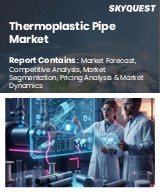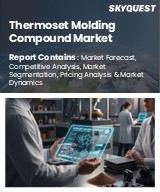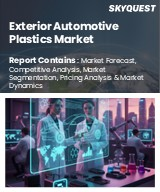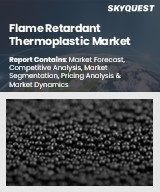
|
시장보고서
상품코드
1725178
세계의 열가소성 플라스틱 파이프 시장 예측(-2032년) : 유형별, 폴리머 유형별, 유통 채널별, 용도별, 지역별 분석Thermoplastic Pipe Market Forecasts to 2032 - Global Analysis By Type (Reinforced Thermoplastic Pipes (RTP) and Unreinforced Thermoplastic Pipes), Polymer Type, Distribution Channel, Application and By Geography |
||||||
Stratistics MRC에 따르면 세계의 열가소성 플라스틱 파이프 시장은 2025년에 169억 달러로 평가되었고, 2032년에는 265억 달러에 이를것으로 예측되며, 예측 기간 동안 CAGR은 6.6%를 나타낼 전망입니다.
열가소성 파이프는 특정 고온에서 유연하거나 성형이 가능하고 냉각 시 응고되는 폴리머 기반 재료로 만든 배관 시스템의 한 유형입니다. 이러한 파이프는 내식성, 유연성 및 경량 특성으로 인해 배관, 산업 및 화학 응용 분야에서 널리 사용됩니다. 일반적으로 사용되는 열가소성 플라스틱에는 PVC(폴리염화비닐), PE(폴리에틸렌), PP(폴리프로필렌)가 있습니다. 열가소성 플라스틱 파이프는 설치가 간편하고 비용 효율적이며 내화학성 및 내마모성이 뛰어납니다. 내구성과 재활용성이 뛰어나 상수도, 배수, 가스 유통망 등 다양한 산업에서 유체 및 가스 운송을 위한 친환경적인 선택이 될 수 있습니다.
2차 자료에 따르면, 2021년 아시아태평양 지역의 1차 에너지 소비량은 272.45엑사줄로 전년 대비 6% 이상 증가했습니다.
상하수도 관리에서의 채택 증가
상하수도 관리 분야에서 열가소성 플라스틱 파이프의 채택이 증가하는 이유는 우수한 내식성, 경량성, 설치 용이성 때문입니다. 특히 혹독하고 부식성이 강한 환경에서 내구성과 비용 효율성이 뛰어난 열가소성 플라스틱 파이프를 선호하는 지자체와 산업체가 점점 더 늘어나고 있습니다. 지속 가능성이 우선시되면서 효율적인 유체 운송, 누수 방지 및 유지보수 감소를 위해 PVC, HDPE, PPR과 같은 열가소성 소재가 활용되고 있습니다. 이러한 추세는 전 세계적으로 열가소성 플라스틱 파이프 시장이 확대되는 데 크게 기여하고 있습니다.
재료 호환성 및 내화학성 제한
열가소성 플라스틱 파이프의 재료 호환성 및 내화학성 제한은 특정 용도에서 성능을 저해할 수 있습니다. 일부 열가소성 플라스틱은 특정 화학물질, 온도 또는 환경 조건에 노출되면 성능이 저하되어 잠재적인 시스템 고장을 일으킬 수 있습니다. 이로 인해 화학 물질이나 석유 및 가스 분야와 같이 독성 물질에 대한 높은 내성이 필요한 산업에서는 사용이 제한될 수 있습니다. 결과적으로 기업은 유지보수 비용이 증가하거나 대체 소재로 전환해야 하는 상황에 직면할 수 있으며, 이는 열가소성 플라스틱 파이프의 전반적인 성장과 채택에 영향을 미칩니다.
광업 및 준설 활동 확대
광업과 준설 활동의 확대는 시장의 성장을 크게 견인하고 있습니다. 이러한 산업에서는 내구성이 뛰어나고 부식에 강하며 가벼운 배관 시스템을 필요로 하는데, 열가소성 플라스틱은 이를 효율적으로 제공합니다. 광업에서 이러한 파이프는 슬러리 운송 및 탈수에 사용되며 준설에서는 연마재와 거친 해양 조건을 처리하는 데 사용됩니다. 유연성, 설치 용이성, 낮은 유지보수 비용 덕분에 이러한 까다로운 환경에 이상적이며, 이러한 부문에서 채택이 증가하고 시장이 확대되고 있습니다.
기존 소재에 대한 인식 부족 및 기존 선호도 고착화
금속이나 콘크리트 파이프와 같은 기존 소재에 대한 인식 부족과 기존 선호도는 시장 성장에 큰 걸림돌이 되고 있습니다. 많은 업계에서 기존 소재에 대한 친숙함과 장기적인 성능에 대한 회의적인 시각으로 인해 열가소성 플라스틱 파이프의 도입을 주저하고 있습니다. 이러한 저항은 시장 침투를 늦추고 더 비용 효율적이고 가볍고 내구성이 뛰어난 열가소성 대체재로 전환하는 것을 방해할 수 있습니다. 이러한 관성을 극복하려면 열가소성 플라스틱 파이프의 이점에 대한 더 많은 교육과 시연이 필요합니다.
COVID-19의 영향
COVID-19의 대유행은 시장에 큰 영향을 미쳐 생산, 공급망, 프로젝트 일정에 차질을 빚었습니다. 제조 시설이 일시적으로 폐쇄되고 운송 제한이 시행되면서 원자재와 완제품의 가용성에 영향을 미쳤습니다. 또한 노동력 부족과 수요 감소로 인해 많은 인프라 프로젝트가 지연되거나 보류되었습니다. 그러나 팬데믹 이후 특히 물 관리 및 건설과 같은 분야에서 내구성이 뛰어나고 유지보수가 적은 배관 시스템에 대한 수요가 증가하면서 시장이 회복되기 시작했습니다.
예측 기간 동안 폴리에틸렌(PE) 부문이 최대가 될 전망
폴리에틸렌(PE) 부문은 예측 기간 동안 가장 큰 시장 점유율을 차지할 것으로 예상됩니다. 상수도, 가스 분배, 하수 및 농업 관개 시스템에 널리 사용되는 PE 파이프는 수명이 길고 유지 관리 비용이 저렴합니다. 또한 가볍기 때문에 기존 소재에 비해 운송과 설치가 용이합니다. 인프라 개발과 환경에 대한 관심이 증가함에 따라 PE 파이프에 대한 수요는 지속적으로 증가하여 현대 배관 솔루션에서 그 역할을 공고히 하고 있습니다.
광업 및 준설 분야는 예측 기간 중 가장 높은 CAGR를 보일 전망
예측 기간 동안 광업 및 준설 부문은 가장 높은 성장률을 보일 것으로 예상됩니다. 이러한 용도에는 연마재, 열악한 환경 및 고압을 견딜 수 있는 파이프가 필요합니다. 열가소성 플라스틱 파이프, 특히 HDPE와 PVC로 만든 파이프는 내식성, 유연성 및 내구성으로 인해 이상적입니다. 광업에서는 슬러리 및 광미 이송에 사용되며, 준설에서는 침전물과 잔해물을 처리하는 데 사용됩니다. 또한 경량 설계로 설치와 유지보수가 간편하여 이러한 까다로운 산업에서 비용 효율적인 선택이 될 수 있습니다.
최대 점유율을 차지하는 지역 :
예측 기간 동안 아시아태평양 지역은 급속한 도시화, 인프라 개발, 석유 및 가스, 수자원 및 폐수 관리, 광업과 같은 부문에 대한 상당한 투자로 인해 가장 큰 시장 점유율을 차지할 것으로 예상됩니다. 중국, 인도, 인도네시아 등의 국가는 비용 효율적인 제조와 부식 방지 및 내구성 있는 배관 솔루션에 대한 수요 증가의 혜택을 누리며 중추적인 역할을 하고 있습니다. 이 시장은 정부 노력과 민간 부문의 투자에 힘입어 지속적으로 성장할 것으로 예상됩니다.
CAGR이 가장 높은 지역 :
예측 기간 동안 북미 지역은 가장 높은 CAGR을 보일 것으로 예상됩니다. 이 파이프는 내식성, 유연성 및 설치 용이성과 같은 이점을 제공하여 다양한 용도에 이상적입니다. 기술 발전과 지속 가능한 인프라에 대한 관심이 시장 확대를 더욱 촉진하고 있습니다.
무료 맞춤화 서비스 :
이 보고서를 구독하는 고객은 다음 무료 맞춤설정 옵션 중 하나를 사용할 수 있습니다.
- 기업 프로파일
- 추가 시장 기업의 종합적 프로파일링(최대 3개사)
- 주요 기업의 SWOT 분석(최대 3개사)
- 지역 세분화
- 고객의 관심에 응한 주요국 시장 추계, 예측 및 CAGR(참고 : 타당성 확인에 따름)
- 경쟁 벤치마킹
- 제품 포트폴리오, 지리적 존재, 전략적 제휴에 기반한 주요 기업 벤치마킹
목차
제1장 주요 요약
제2장 서문
- 개요
- 이해관계자
- 조사 범위
- 조사 방법
- 데이터 마이닝
- 데이터 분석
- 데이터 검증
- 조사 접근
- 조사 자료
- 1차 조사 자료
- 2차 조사 자료
- 전제조건
제3장 시장 동향 분석
- 성장 촉진요인
- 억제요인
- 기회
- 위협
- 용도 분석
- 신흥 시장
- COVID-19의 영향
제4장 Porter's Five Forces 분석
- 공급기업의 협상력
- 구매자의 협상력
- 대체품의 위협
- 신규 참가업체의 위협
- 경쟁 기업간 경쟁 관계
제5장 세계의 열가소성 파이프 시장 : 유형별
- 강화 열가소성 파이프(RTP)
- 비강화 열가소성 파이프
제6장 세계의 열가소성 파이프 시장 : 폴리머 유형별
- 폴리에틸렌(PE)
- 폴리염화비닐(PVC)
- 폴리불화비닐리덴(PVDF)
- 폴리프로필렌(PP)
- 폴리아미드(PA)
- 기타 폴리머 유형
제7장 세계의 열가소성 파이프 시장 : 유통 채널별
- 직접 판매
- 유통업체 및 판매 대리점
- 소매업체
- 온라인 마켓플레이스
제8장 세계의 열가소성 파이프 시장 : 용도별
- 석유 및 가스
- 상하수도
- 유틸리티 및 재생에너지
- 광업 및 준설
- 전력 및 에너지
- 화학 물질
- 농업
- 기타 용도
제9장 세계의 열가소성 파이프 시장 : 지역별
- 북미
- 미국
- 캐나다
- 멕시코
- 유럽
- 독일
- 영국
- 이탈리아
- 프랑스
- 스페인
- 기타 유럽
- 아시아태평양
- 일본
- 중국
- 인도
- 호주
- 뉴질랜드
- 한국
- 기타 아시아태평양
- 남미
- 아르헨티나
- 브라질
- 칠레
- 기타 남미
- 중동 및 아프리카
- 사우디아라비아
- 아랍에미리트(UAE)
- 카타르
- 남아프리카
- 기타 중동 및 아프리카
제10장 주요 발전
- 계약, 파트너십, 협업, 합작투자
- 인수와 합병
- 신제품 발매
- 사업 확대
- 기타 주요 전략
제11장 기업 프로파일링
- Solvay SA
- Wienerberger AG
- Dow Chemical Company
- TechnipFMC
- Borealis AG
- Advanced Drainage Systems, Inc.
- Prysmian Group
- Chevron Phillips Chemical Company
- ISCO Industries
- Simtech Process Systems
- Endot Industries
- JM Eagle
- Arkema SA
- Evonik Industries AG
- Rochling Group
According to Stratistics MRC, the Global Thermoplastic Pipe Market is accounted for $16.9 billion in 2025 and is expected to reach $26.5 billion by 2032 growing at a CAGR of 6.6% during the forecast period. A thermoplastic pipe is a type of piping system made from polymer-based materials that become pliable or moldable at a certain elevated temperature and solidify upon cooling. These pipes are widely used in plumbing, industrial, and chemical applications due to their corrosion resistance, flexibility, and lightweight nature. Common thermoplastics used include PVC (polyvinyl chloride), PE (polyethylene), and PP (polypropylene). Thermoplastic pipes are easy to install, cost-effective, and offer excellent chemical and abrasion resistance. Their durability and recyclability make them an eco-friendly choice for fluid and gas transportation in various industries, including water supply, drainage, and gas distribution networks.
According to secondary sources, in 2021, the Asia Pacific region's primary energy consumption was 272.45 exajoules, an increase of more than 6% over the previous year. According to a study conducted by the Federal Highway Administration (FHWA), corrosion accounts for more than $36 billion in the yearly loss in water and sewage systems across the United States.
Market Dynamics:
Driver:
Growing adoption in water and wastewater management
The growing adoption of thermoplastic pipes in water and wastewater management is driven by their superior corrosion resistance, lightweight nature, and ease of installation. Municipalities and industries are increasingly favoring these pipes for their durability and cost-effectiveness, particularly in harsh and corrosive environments. As sustainability becomes a priority, thermoplastic materials like PVC, HDPE, and PPR are being utilized for efficient fluid transport, leak prevention, and reduced maintenance. This trend significantly contributes to the expanding thermoplastic pipe market worldwide.
Restraint:
Material compatibility and chemical resistance limitations
Material compatibility and chemical resistance limitations in thermoplastic pipes can hinder their performance in certain applications. Some thermoplastics may degrade when exposed to specific chemicals, temperatures, or environmental conditions, leading to potential system failures. This limits their use in industries requiring high resistance to aggressive substances, such as chemicals or oil and gas sectors. As a result, businesses may face increased maintenance costs or the need to switch to alternative materials, affecting the overall growth and adoption of thermoplastic pipes.
Opportunity:
Expansion in mining and dredging activities
The expansion of mining and dredging activities is significantly driving growth in the market. These industries demand durable, corrosion-resistant, and lightweight piping systems, which thermoplastics efficiently provide. In mining, these pipes are used for slurry transport and dewatering, while in dredging, they handle abrasive materials and harsh marine conditions. Their flexibility, ease of installation, and low maintenance make them ideal for such demanding environments, fueling increased adoption and market expansion across these sectors.
Threat:
Lack of awareness and established preference for traditional materials
The lack of awareness and established preference for traditional materials, such as metal or concrete pipes, poses a significant challenge to the growth of the market. Many industries are hesitant to adopt thermoplastic pipes due to familiarity with conventional materials and skepticism about their long-term performance. This resistance can slow market penetration and hinder the transition to more cost-effective, lightweight, and durable thermoplastic alternatives. Overcoming this inertia requires greater education and demonstration of the benefits of thermoplastic pipes.
Covid-19 Impact
The COVID-19 pandemic had a significant impact on the market, causing disruptions in production, supply chains, and project timelines. With manufacturing facilities temporarily closing and transportation restrictions in place, the availability of raw materials and finished products was affected. Additionally, many infrastructure projects were delayed or put on hold due to labor shortages and reduced demand. However, the market began recovering as demand for durable, low-maintenance piping systems increased post-pandemic, particularly in sectors like water management and construction.
The polyethylene (PE) segment is expected to be the largest during the forecast period
The polyethylene (PE) segment is expected to account for the largest market share during the forecast period. Widely used in water supply, gas distribution, sewage, and agricultural irrigation systems, PE pipes offer long service life and low maintenance costs. Their lightweight nature makes transportation and installation easier compared to traditional materials. As infrastructure development and environmental concerns grow, the demand for PE pipes continues to rise, solidifying their role in modern piping solutions.
The mining & dredging segment is expected to have the highest CAGR during the forecast period
Over the forecast period, the mining & dredging segment is predicted to witness the highest growth rate. These applications require pipes that can withstand abrasive materials, harsh environments, and high pressure. Thermoplastic pipes, particularly those made from HDPE and PVC, are ideal due to their corrosion resistance, flexibility, and durability. In mining, they are used for slurry and tailings transport, while in dredging, they handle sediment and debris. Their lightweight design also simplifies installation and maintenance, making them a cost-effective choice in these demanding industries.
Region with largest share:
During the forecast period, the Asia Pacific region is expected to hold the largest market share driven by rapid urbanization, infrastructural development, and significant investments in sectors like oil and gas, water and wastewater management, and mining. Countries such as China, India, and Indonesia are pivotal players, benefiting from cost-effective manufacturing and increasing demand for corrosion-resistant and durable piping solutions. The market is poised for continued growth, supported by both governmental initiatives and private sector investments.
Region with highest CAGR:
Over the forecast period, the North America region is anticipated to exhibit the highest CAGR. These pipes offer advantages like corrosion resistance, flexibility, and ease of installation, making them ideal for various applications. Technological advancements and a focus on sustainable infrastructure are further boosting market expansion. The U.S. leads the region due to strong industrial activity and investments in pipeline modernization and environmental compliance.
Key players in the market
Some of the key players profiled in the Thermoplastic Pipe Market include Solvay S.A., Wienerberger AG, Dow Chemical Company, TechnipFMC, Borealis AG, Advanced Drainage Systems, Inc., Prysmian Group, Chevron Phillips Chemical Company, ISCO Industries, Simtech Process Systems, Endot Industries, JM Eagle, Arkema SA, Evonik Industries AG and Rochling Group.
Key Developments:
In October 2024, Braven Environmental, a market leader in advanced recycling, announced the signing of a long-term offtake agreement with Chevron Phillips Chemical, a global player in the chemical industry and leading supplier of polyethylene. This agreement will provide CPChem with a significant annual volume of ISCC PLUS certified pyrolysis oil, known as Braven PyChem(TM), from the initial phase of Braven's forthcoming facility.
In January 2024, Dow, announced two new partnerships at Chinaplas 2024 to develop solutions that meet both performance and circular demands. In collaboration with Dow, Sealed Air has commercialized an e-commerce packaging with increased recycled content.
Types Covered:
- Reinforced Thermoplastic Pipes (RTP)
- Unreinforced Thermoplastic Pipes
Polymer Types Covered:
- Polyethylene (PE)
- Polyvinyl Chloride (PVC)
- Polyvinylidene Fluoride (PVDF)
- Polypropylene (PP)
- Polyamide (PA)
- Other Polymer Types
Distribution Channels Covered:
- Direct Sales
- Distributors and Sales Agents
- Retailers
- Online Marketplaces
Applications Covered:
- Oil & Gas
- Water & Wastewater
- Utilities & Renewables
- Mining & Dredging
- Power & Energy
- Chemical
- Agriculture
- Other Applications
Regions Covered:
- North America
- US
- Canada
- Mexico
- Europe
- Germany
- UK
- Italy
- France
- Spain
- Rest of Europe
- Asia Pacific
- Japan
- China
- India
- Australia
- New Zealand
- South Korea
- Rest of Asia Pacific
- South America
- Argentina
- Brazil
- Chile
- Rest of South America
- Middle East & Africa
- Saudi Arabia
- UAE
- Qatar
- South Africa
- Rest of Middle East & Africa
What our report offers:
- Market share assessments for the regional and country-level segments
- Strategic recommendations for the new entrants
- Covers Market data for the years 2024, 2025, 2026, 2028, and 2032
- Market Trends (Drivers, Constraints, Opportunities, Threats, Challenges, Investment Opportunities, and recommendations)
- Strategic recommendations in key business segments based on the market estimations
- Competitive landscaping mapping the key common trends
- Company profiling with detailed strategies, financials, and recent developments
- Supply chain trends mapping the latest technological advancements
Free Customization Offerings:
All the customers of this report will be entitled to receive one of the following free customization options:
- Company Profiling
- Comprehensive profiling of additional market players (up to 3)
- SWOT Analysis of key players (up to 3)
- Regional Segmentation
- Market estimations, Forecasts and CAGR of any prominent country as per the client's interest (Note: Depends on feasibility check)
- Competitive Benchmarking
- Benchmarking of key players based on product portfolio, geographical presence, and strategic alliances
Table of Contents
1 Executive Summary
2 Preface
- 2.1 Abstract
- 2.2 Stake Holders
- 2.3 Research Scope
- 2.4 Research Methodology
- 2.4.1 Data Mining
- 2.4.2 Data Analysis
- 2.4.3 Data Validation
- 2.4.4 Research Approach
- 2.5 Research Sources
- 2.5.1 Primary Research Sources
- 2.5.2 Secondary Research Sources
- 2.5.3 Assumptions
3 Market Trend Analysis
- 3.1 Introduction
- 3.2 Drivers
- 3.3 Restraints
- 3.4 Opportunities
- 3.5 Threats
- 3.6 Application Analysis
- 3.7 Emerging Markets
- 3.8 Impact of Covid-19
4 Porters Five Force Analysis
- 4.1 Bargaining power of suppliers
- 4.2 Bargaining power of buyers
- 4.3 Threat of substitutes
- 4.4 Threat of new entrants
- 4.5 Competitive rivalry
5 Global Thermoplastic Pipe Market, By Type
- 5.1 Introduction
- 5.2 Reinforced Thermoplastic Pipes (RTP)
- 5.3 Unreinforced Thermoplastic Pipes
6 Global Thermoplastic Pipe Market, By Polymer Type
- 6.1 Introduction
- 6.2 Polyethylene (PE)
- 6.3 Polyvinyl Chloride (PVC)
- 6.4 Polyvinylidene Fluoride (PVDF)
- 6.5 Polypropylene (PP)
- 6.6 Polyamide (PA)
- 6.7 Other Polymer Types
7 Global Thermoplastic Pipe Market, By Distribution Channel
- 7.1 Introduction
- 7.2 Direct Sales
- 7.3 Distributors and Sales Agents
- 7.4 Retailers
- 7.5 Online Marketplaces
8 Global Thermoplastic Pipe Market, By Application
- 8.1 Introduction
- 8.2 Oil & Gas
- 8.3 Water & Wastewater
- 8.4 Utilities & Renewables
- 8.5 Mining & Dredging
- 8.6 Power & Energy
- 8.7 Chemical
- 8.8 Agriculture
- 8.9 Other Applications
9 Global Thermoplastic Pipe Market, By Geography
- 9.1 Introduction
- 9.2 North America
- 9.2.1 US
- 9.2.2 Canada
- 9.2.3 Mexico
- 9.3 Europe
- 9.3.1 Germany
- 9.3.2 UK
- 9.3.3 Italy
- 9.3.4 France
- 9.3.5 Spain
- 9.3.6 Rest of Europe
- 9.4 Asia Pacific
- 9.4.1 Japan
- 9.4.2 China
- 9.4.3 India
- 9.4.4 Australia
- 9.4.5 New Zealand
- 9.4.6 South Korea
- 9.4.7 Rest of Asia Pacific
- 9.5 South America
- 9.5.1 Argentina
- 9.5.2 Brazil
- 9.5.3 Chile
- 9.5.4 Rest of South America
- 9.6 Middle East & Africa
- 9.6.1 Saudi Arabia
- 9.6.2 UAE
- 9.6.3 Qatar
- 9.6.4 South Africa
- 9.6.5 Rest of Middle East & Africa
10 Key Developments
- 10.1 Agreements, Partnerships, Collaborations and Joint Ventures
- 10.2 Acquisitions & Mergers
- 10.3 New Product Launch
- 10.4 Expansions
- 10.5 Other Key Strategies
11 Company Profiling
- 11.1 Solvay S.A.
- 11.2 Wienerberger AG
- 11.3 Dow Chemical Company
- 11.4 TechnipFMC
- 11.5 Borealis AG
- 11.6 Advanced Drainage Systems, Inc.
- 11.7 Prysmian Group
- 11.8 Chevron Phillips Chemical Company
- 11.9 ISCO Industries
- 11.10 Simtech Process Systems
- 11.11 Endot Industries
- 11.12 JM Eagle
- 11.13 Arkema SA
- 11.14 Evonik Industries AG
- 11.15 Rochling Group



















